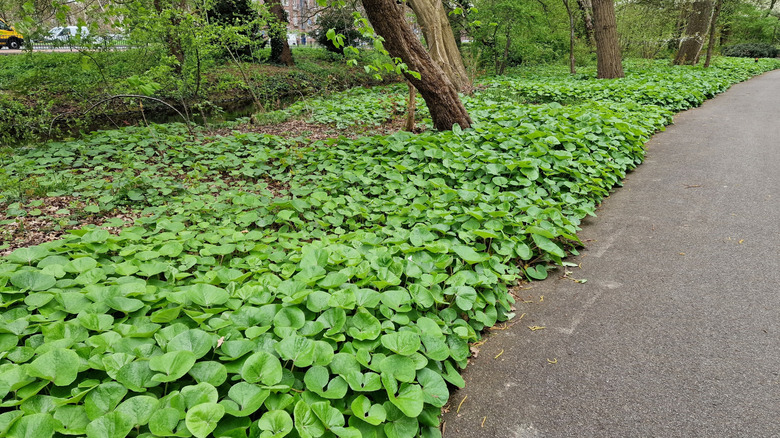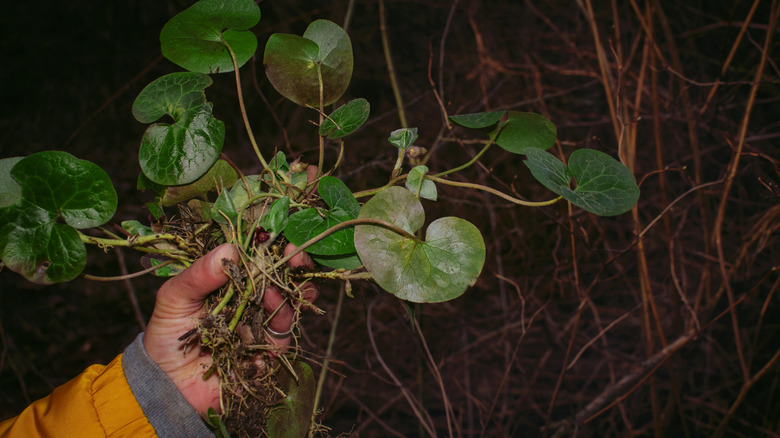Help Your Wild Ginger Ground Cover Thrive With Plant Division: Here's How
When it comes to plants you grow to protect your soil and cover your garden beds in dense foliage, few beat out wild ginger. The hardy and undeniably pretty native green ground cover is perfect for shady areas of your yard and garden. While the many wild ginger species under the genus Asarum do have small bell-shaped spring blooms that smell like rotten fruit, the plant is coveted by gardeners for its glossy green, cheerfully rotund leaves and its ability to densely colonise beds deep in the shade.
However, dividing a patch of wild ginger, either in spring or fall, is vital if you want it to behave as a ground cover and spread over an area in a reasonable time. It's unlikely to spread — quickly at least, since it's notoriously slow growing — without help from you, the gardener. To help the slow-growing wild ginger shake its lackadaisical growing approach and colonize an area, dig up a mature plant, divide it at the roots, and replant the separated individuals in another shady, fertile location. Help your new wild ginger colonies along by watering them and adding some amenable companion plants.
If you're a fan of the naturalistic woodland garden style and live in Hardiness Zones 4 to 8, dividing and replanting wild ginger will, with patience, provide exactly the aesthetic you crave. What's more, it's efficient. Since division is really only done to increase the green cloud of foliage under your trees and not to maintain the health of this hardy perennial, you can stop dividing your patch once it has reached the size you want.
How to divide wild ginger so it spreads happily under the trees
While there are many species in the genus Asarum, you'll most likely be growing European wild ginger, Asarum europaeum, and wild ginger, Asarum canadense, since they're the species most widely available to American home gardeners. If spring, the preferred season for dividing wild ginger, isn't an option, experts state that fall is second best; it's when wild ginger enters dormancy. Other horticulturists say you can split and move plants any time of the year, but they may be slow to establish in their new spot. Select mature plants for division. Then dig up the entire plant with the root system intact. The roots will typically be tangled together; all you need to do is disentangle the roots by pulling them gently apart to separate the plants.
Replant what you've just divided immediately in a spot that's shady, moist, fertile, and away from foot traffic; wild ginger will happily thrive under a pine tree, for example. Any new growth emerging from the crown should stay above the soil surface. Space new plants at least 12 to and 24 inches from the original clump or each other — this careful spacing creates the dense living rug of wild ginger is praised for. Keep the newly establishing plants well watered to get those stressed roots growing contently once again. Other than that, they need little care. Looking for more attractive ground cover options? Consider planting dwarf fothergilla or sessile-leaf bellwort nearby — they're both low-maintenance companion plants that grow well with wild ginger.

